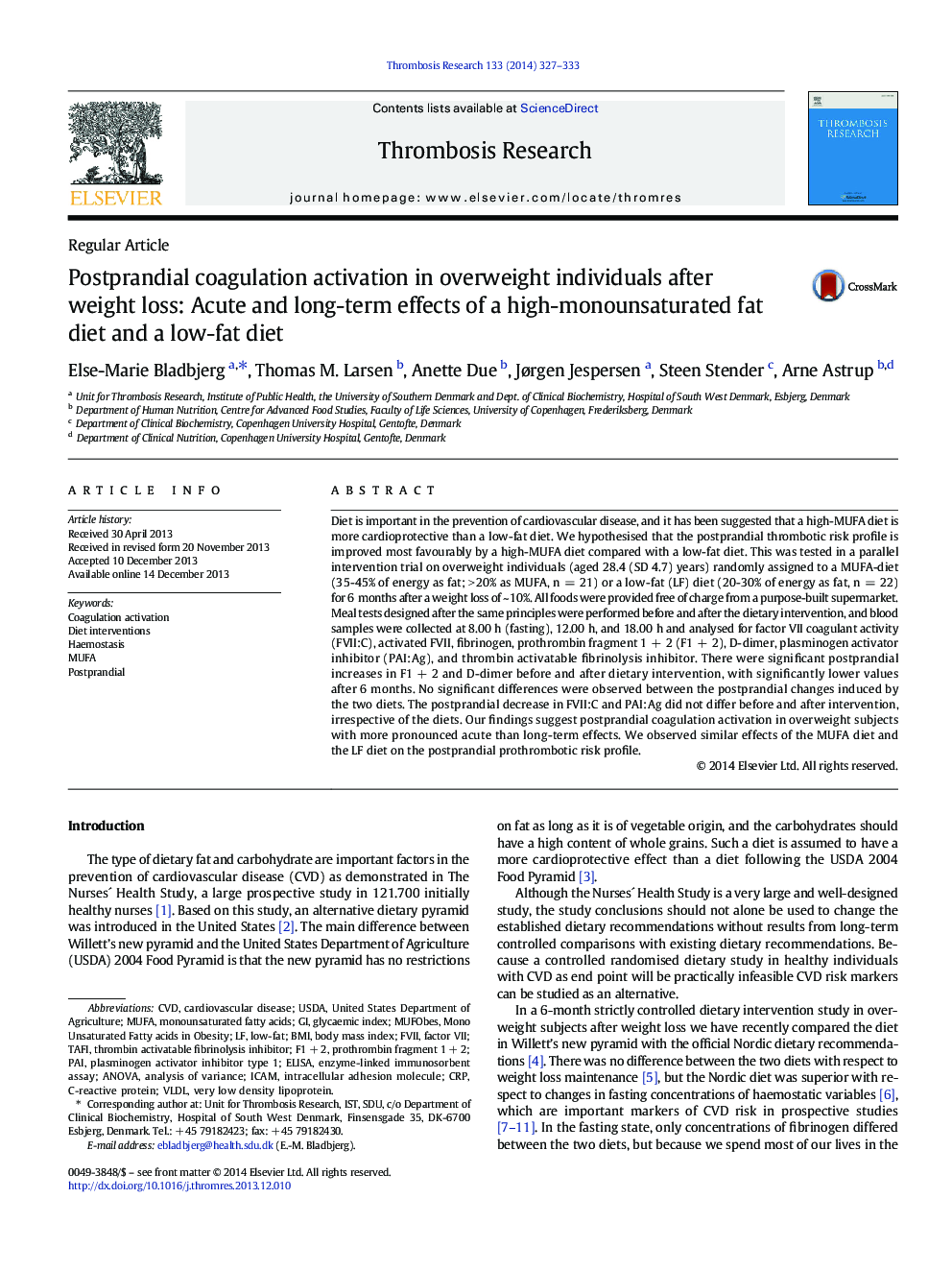| Article ID | Journal | Published Year | Pages | File Type |
|---|---|---|---|---|
| 6002402 | Thrombosis Research | 2014 | 7 Pages |
Abstract
Diet is important in the prevention of cardiovascular disease, and it has been suggested that a high-MUFA diet is more cardioprotective than a low-fat diet. We hypothesised that the postprandial thrombotic risk profile is improved most favourably by a high-MUFA diet compared with a low-fat diet. This was tested in a parallel intervention trial on overweight individuals (aged 28.4 (SD 4.7) years) randomly assigned to a MUFA-diet (35-45% of energy as fat; > 20% as MUFA, n = 21) or a low-fat (LF) diet (20-30% of energy as fat, n = 22) for 6 months after a weight loss of ~ 10%. All foods were provided free of charge from a purpose-built supermarket. Meal tests designed after the same principles were performed before and after the dietary intervention, and blood samples were collected at 8.00 h (fasting), 12.00 h, and 18.00 h and analysed for factor VII coagulant activity (FVII:C), activated FVII, fibrinogen, prothrombin fragment 1 + 2 (F1 + 2), D-dimer, plasminogen activator inhibitor (PAI:Ag), and thrombin activatable fibrinolysis inhibitor. There were significant postprandial increases in F1 + 2 and D-dimer before and after dietary intervention, with significantly lower values after 6 months. No significant differences were observed between the postprandial changes induced by the two diets. The postprandial decrease in FVII:C and PAI:Ag did not differ before and after intervention, irrespective of the diets. Our findings suggest postprandial coagulation activation in overweight subjects with more pronounced acute than long-term effects. We observed similar effects of the MUFA diet and the LF diet on the postprandial prothrombotic risk profile.
Keywords
VLDLFVIIUSDAICAMTAFIMUFAF1 + 2monounsaturated fatty acidsPAIcardiovascular diseaseanalysis of varianceANOVAEnzyme-linked immunosorbent assayELISAUnited States Department of AgricultureCVDbody mass indexBMIGlycaemic indexFactor VIICoagulation activationprothrombin fragment 1 + 2very low density lipoproteinThrombin activatable fibrinolysis inhibitorintracellular adhesion moleculePlasminogen activator inhibitor type 1HaemostasisC-reactive proteinCRPPostprandialLow-fat
Related Topics
Health Sciences
Medicine and Dentistry
Cardiology and Cardiovascular Medicine
Authors
Else-Marie Bladbjerg, Thomas M. Larsen, Anette Due, Jørgen Jespersen, Steen Stender, Arne Astrup,
